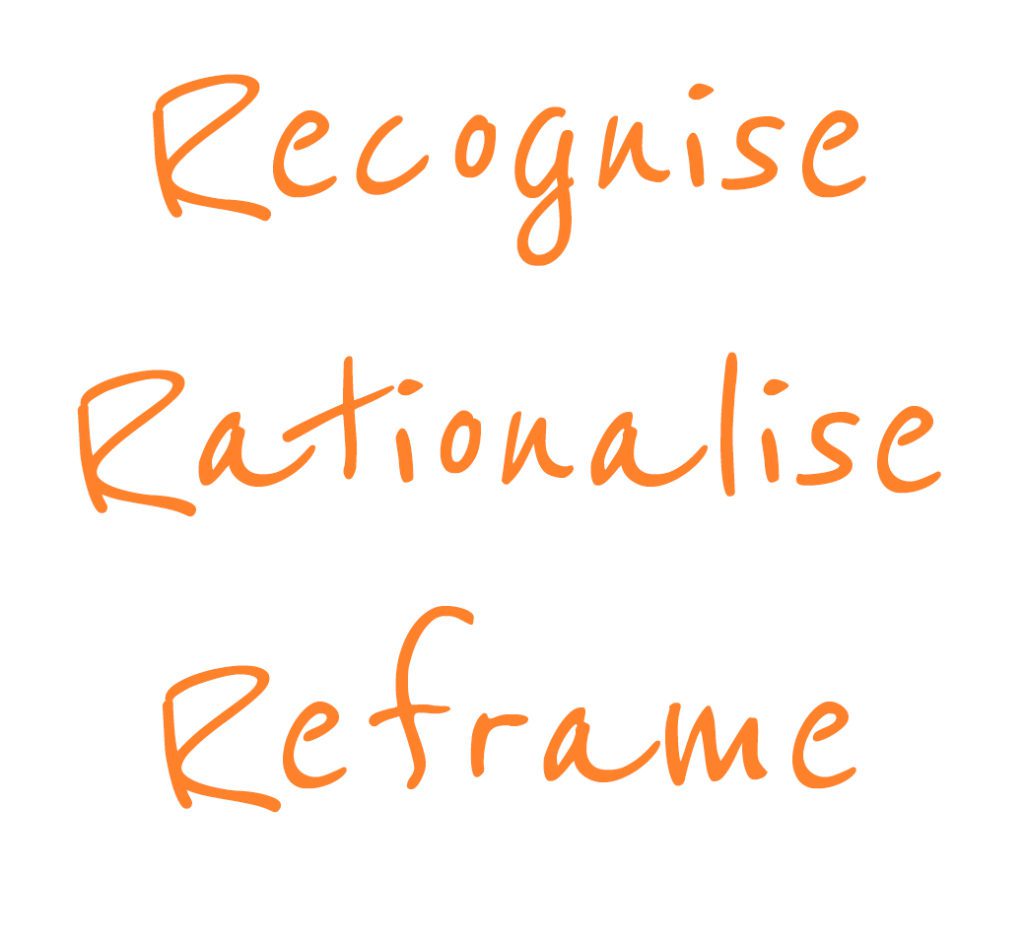Negative Thought Challenging
Negative thoughts are unhelpful thinking habits which cause feelings such as sadness, anxiety, anger, and hopelessness. Often, we are unaware of our negative thoughts as they occur automatically and appear to be both reasonable and believable. The worse we feel, the more likely we are to think negatively and believe these thoughts to be true, even though they are usually unreasonable, illogical and unrealistic. Negative thoughts trigger our fight or flight response which can cause physical, emotional and cognitive symptoms. You can read more about this here.
Negative Thought Challenging is a therapy technique I use with many of my clients as part of the process to help them overcome anxiety. Anxiety is sparked by our thoughts and beliefs about triggers, such as future events, past experiences or certain people. It’s not actually caused by our triggers. For example, if someone feels fearful and anxious about doing presentations at work, it’s not the public speaking that triggers their anxiety, but their thoughts about it such as “I will forget everything I need to say”, “I don’t know what I’m talking about”, “Someone will ask a question that I can’t answer and I’ll look like an idiot”, “I’ll panic and run from the room”.

The 3 Step Process To Overcome Negative Thoughts
Thought Challenging is a process that you can do on your own or with a therapist. I use hypnosis with clients at each step of the process to elicit deep and honest thinking, imagination and visualisation.
The 3 Steps are:
Step 1 – Recognise your negative thoughts.
- Try to spot your thoughts that are about negative assumptions, feelings, or ideas about yourself and others
- Be honest with yourself
- Write down your negative thoughts and beliefs when you notice them
- Think about how these thoughts make you feel physically, emotionally and mentally
- Think about how your feelings and thoughts make you behave and the consequences of this
Step 2 – Rationalise your negative thoughts.
- Ask yourself what’s the evidence for and against your thought
- This evidence should be factual, rational, and logical
- Write down all your evidence
Questions you can ask yourself include:
- What is the evidence for my thought?
- What is the evidence against my thought?
- What alternative views are there? What is the evidence for them?
- What is the best that could happen? How likely is that as a %?
- Am I putting my words into people’s mouths or projecting meaning onto their actions that isn’t there?
- Am I reading between the lines?
- Am I concentrating on my own or others’ weaknesses and neglecting strengths?
Step 3 – Reframe your negative thoughts into helpful thoughts.
- Looking at all the evidence for and against your negative thought start to reframe it in to a more helpful one, even if you don’t believe it yet
- How could you think differently about the same situation that would be more helpful, positive, and balanced?
- This might take a few attempts
- Check that your new thought is evidence based, logical, and rational

an example of Thought Challenging
Step 1. Recognise negative thoughts
- “I am totally useless at my job”.
Step 2. Rationalise your negative thoughts
- Where is the evidence for my belief? “My boss told me that I could improve my presentation skills”, “I couldn’t answer a question in a meeting.”
- What’s the evidence against my belief? “My last appraisal was almost all good”. “My colleagues come to me for advice about work.” “I’ve been asked to train new members of the team”, “I am achieving the targets that have been set”, “I usually can answer all the questions put to me”.
Step 3. Reframe your negative thoughts into helpful thoughts
- “I am good at of my job and could be even better with some more practice or experience”
